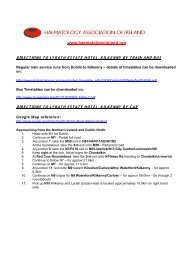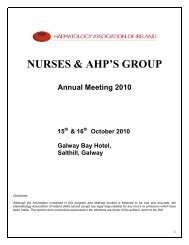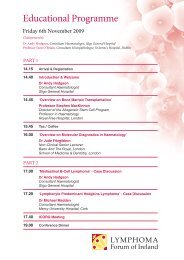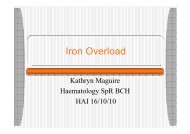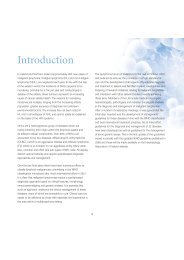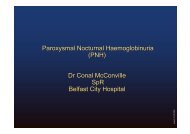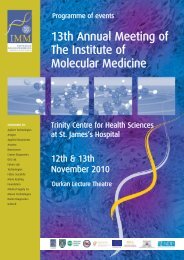Guidelines on Diagnosis and Treatment of Malignant Lymphomas
Guidelines on Diagnosis and Treatment of Malignant Lymphomas
Guidelines on Diagnosis and Treatment of Malignant Lymphomas
You also want an ePaper? Increase the reach of your titles
YUMPU automatically turns print PDFs into web optimized ePapers that Google loves.
B Cell Lymphoma<br />
Definiti<strong>on</strong> <strong>and</strong> Incidence<br />
Aggressive large cell B cell lymphomas with morphologic<br />
<strong>and</strong> genetic features <strong>of</strong> both DLBCL <strong>and</strong> Burkitt lymphoma<br />
but with atypical features which preclude classificati<strong>on</strong> with<br />
either <strong>of</strong> these entities. Some <strong>of</strong> these cases were previously<br />
classified as Burkitt-like lymphoma. Some cases have mixed<br />
morphology intermediate between DLBCL <strong>and</strong> BL, others<br />
have typical morphology <strong>of</strong> BL but atypical immunophenotype<br />
or genetic features.<br />
This disease category is heterogenous, infrequently diagnosed,<br />
<strong>and</strong> is not a distinct entity but allows classificati<strong>on</strong> <strong>of</strong> cases which<br />
are impossible to classify as classical DLBCL or BL.<br />
ICD – O Code: 9680/3<br />
Clinical Presentati<strong>on</strong><br />
Many cases present with extra-nodal disease but there is no<br />
particular associati<strong>on</strong> with ileocaecal or jaw locati<strong>on</strong>. B<strong>on</strong>e<br />
marrow <strong>and</strong> peripheral blood may be involved.<br />
Pathology<br />
There is a diffuse proliferati<strong>on</strong> <strong>of</strong> medium to large sized lymphoid<br />
cells with frequent mitotic <strong>and</strong> apoptotic activity <strong>and</strong> many<br />
macrophages with a “starry sky” appearance.<br />
Nuclear morphology is more variable than in classical BL<br />
including variati<strong>on</strong> in nuclear size, nuclear irregularity <strong>and</strong>/or<br />
prominent nucleoli. In some cases morphology is typical <strong>of</strong><br />
BL but immunophenotype <strong>and</strong>/or genetic features are not.<br />
Occasi<strong>on</strong>al cases have smaller nuclei resembling lymphoblasts.<br />
Cases <strong>of</strong> morphologically typical DLBCL with very<br />
high proliferati<strong>on</strong> fracti<strong>on</strong> should NOT be included.<br />
Immunophenotype<br />
B cell markers are positive, including CD20, CD19 <strong>and</strong> CD79a.<br />
Surface Ig is typically positive. Ki67 labelling index is usually<br />
very high. Many cases in this category dem<strong>on</strong>strate a typical<br />
immunophenotype for BL (CD10+, BCL6+, BCL2- IRF4/MUM1-)<br />
but atypical morphology. Cases with typical morphology <strong>of</strong> BL but<br />
atypical immunophenotype (BCL2+) are also included although<br />
such cases may also represent a “double-hit” phenomen<strong>on</strong> with<br />
both BCL2 <strong>and</strong> MYC translocati<strong>on</strong>s.<br />
Genetics<br />
Cl<strong>on</strong>al Ig gene rearrangements are present. 35-50% <strong>of</strong> cases have<br />
8q24/MYC translocati<strong>on</strong> but unlike BL many <strong>of</strong> these are n<strong>on</strong><br />
IG-MYC translocati<strong>on</strong>s. BCL2 translocati<strong>on</strong> is present in up to 15%<br />
<strong>of</strong> cases <strong>and</strong> may be associated with MYC (“double hit”) <strong>and</strong>/or<br />
BLC6 translocati<strong>on</strong>s. A complex karyotype is frequent, unlike BL.<br />
Staging<br />
As for Burkitt Lymphoma<br />
Recommended investigati<strong>on</strong>s<br />
As for Burkitt Lymphoma<br />
41




